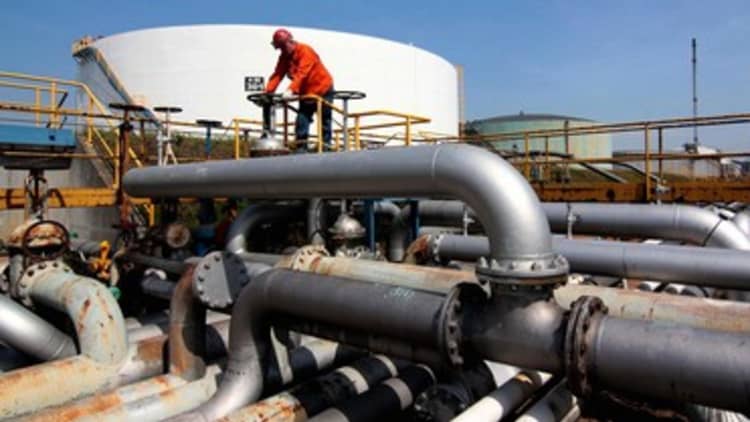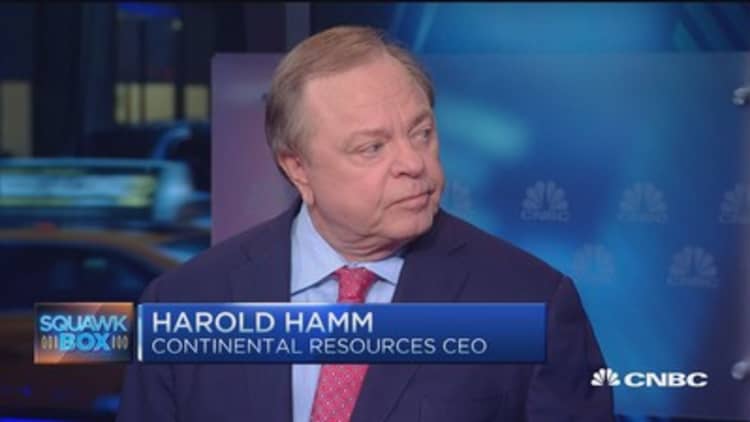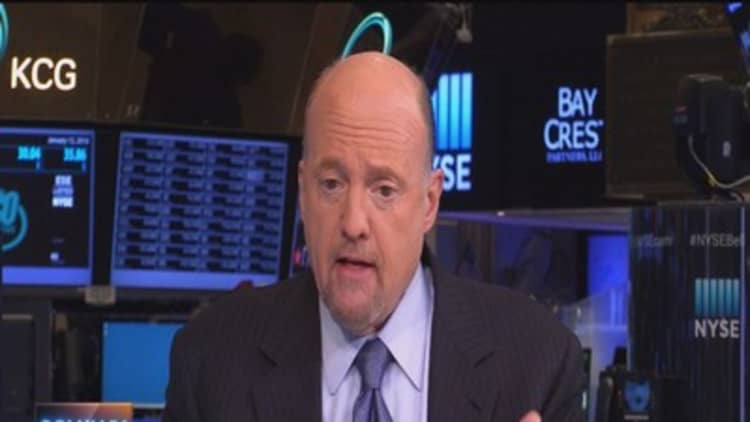




The U.S. crude settle — which was delayed by about 50 minutes due to volatility — came in at $30.44 a barrel, according to the New York Mercantile Exchange.
Earlier, CNBC reported the settlement was a few cents lower, citing an industry source.
Crude oil prices lost more than 4 percent, extending a relentless selloff to trade below $30 a barrel for the first time since December 2003 on concerns about fragile Chinese demand and the absence of restraint in global production.
WTI in 2016
Shaking off early firmness, crude extended a nearly 7 percent drop from Monday. Losses for the year of almost 17 percent have been driven by too much supply, the weakening economy of No. 2 consumer China, sliding stock markets, and a strong dollar, which makes it more expensive for those using other currencies to buy oil.
Analysts at Barclays, Macquarie, Bank of America Merrill Lynch, Standard Chartered and Societe Generale all cut their 2016 oil forecasts this week, with Standard Chartered saying oil could fall as low as $10 per barrel.
U.S. crude West Texas Intermediate (WTI) fell as low as $29.93, the weakest price since December 2003.
WTI in last 12 months
International benchmark Brent crude recovered to $30.96 per barrel, down 59 cents, after falling to a low of $30.40, a level last seen in April 2004.
Also on Tuesday, the U.S. Energy Information Administration said it expects U.S. production to fall more quickly in 2016 than previously thought. The EIA now sees U.S. output falling to an average of 8.7 million barrels per day this year from from 9.4 million bpd in 2015.
For 2017, EIA projects U.S. production to average 8.5 million bpd.
U.S. crude prices are expected to average $38.54 in 2016 and $47 in 2017, while Brent is seen averaging $40.15 this year and $50 in 2017, according to EIA.
Crude firmed in early trade after a deadly suicide bombing rocked central Istanbul. Traders said support also came after Nigeria's oil minister commented that a "couple" of Organization of the Petroleum Exporting Countries (OPEC) members had requested an emergency meeting.
But buying faded after the United Arab Emirates oil minister said that the current OPEC strategy was working. Instead, traders chose to focus on the growing global glut.
"The market is so relaxed with the fact that we have a huge surplus. The momentum is too strong to the bearish side, even if fundamentally nothing has changed." said Dominick Chirichella, a senior partner at Energy Management Institute.
Trading data showed that managed short positions in WTI crude contracts, which would profit from a further fall in prices, are at a record high, indicating that many traders expect further falls.
And while demand looks fragile, supply from key producers remains robust.
Iraq, the second-biggest producer within the Organization of the Petroleum Exporting Countries (OPEC), plans to export a record of around 3.63 million barrels per day from its southern oil terminals in February, trade sources said.
They cited a preliminary loading program, up 8 percent from this month.
China's slowing economy has weighed on oil, which has shed more than 70 percent of its value in the last 18 months.
Oil major BP announced plans to cut at least 4,000 jobs in the face of oil's sustained declines.
—Tom DiChristopher contributed to this report.
CORRECTION: This story has been updated to reflect that U.S. oil futures settled at $30.44 a barrel. A previous version of this story misstated the closing figure.






